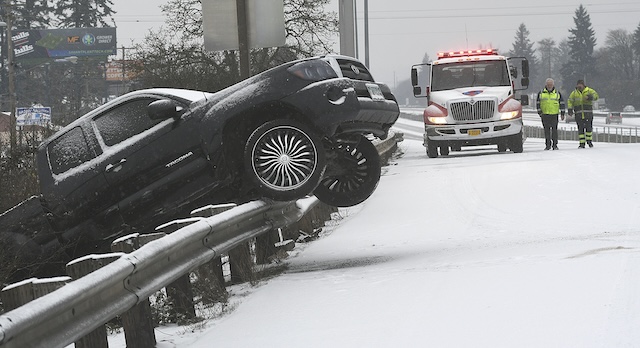Dealing with ball joints, wheel bearings, pressure
Published 12:00 am Sunday, September 13, 2015
Q: On my way home today, I noticed a pickup truck similar to mine on the side of the road with its front left wheel severely angled, as if something broke. It looked like the wheel was still attached but like something was very wrong behind it. Can you explain what might have caused this and how I can be assured I will not be in a similar situation someday? — Alex
A: It’s tough to say what might have happened without getting a firsthand look, but it sounds like the pickup suffered a failure of a ball joint or wheel bearing. Ball joints connect a vehicle’s spindle — part of the suspension system that carries the hub for the wheel — to the control arms. Trucks and larger cars typically have an upper and lower ball joint on each side, while midsize and smaller cars employing a MacPherson strut suspension have only a lower joint. Some ball joints require periodic lubrication, while others are permanently lubricated and sealed. With periodic inspection, a worn or dry ball joint can be identified before a failure occurs. A worn ball joint often causes wandering on uneven road surfaces and a clicking, crunching or popping noise when turning, coming to a stop, or passing over bumps.
It’s also possible the pickup suffered from a grossly failed wheel bearing. This failure may have been preceded by wandering, possibly a growling or clicking noise, or even an illuminated anti-lock braking system warning light. If you place your hands firmly on the tire at the 12 o’clock and 6 o’clock positions and feel looseness or wobbling, that wheel bearing is likely faulty. If you place yours hands at 9 o’clock and 3 o’clock and feel looseness or wobbling, you’re likely looking at worn steering parts, usually a tie rod end.
Q: This may be a dumb question, but how does my car know when one of my tires is low? — Ka thleen Weber
A: Tire pressure monitoring systems come in two varieties: direct and indirect. Direct systems employ a pressure sensor inside each wheel/tire assembly, which when the car is moving report by radio signals about once a minute pressure information to a control module, and in turn, the vehicle’s display screen. Direct systems typically indicate which tire is low and what its pressure is. Battery powered versions will require sensor replacement about every seven to eight years.
Indirect systems infer tire pressure using the anti-lock braking system’s wheel speed sensors. The assumption is a low tire is of smaller diameter and rotates more quickly. This lower-cost version requires periodic calibration and can’t determine when all four tires are simultaneously low.
One drawback to both systems is that neither is required to report a problem until a tire’s pressure has decreased by 25 percent or more. Don’t assume your tires are OK just because the light hasn’t come on! Checking pressure periodically and staying close to the recommended inflation pressure is important.
— Bergholdt teaches automotive technology. Email questions to under-the-hood@earthlink.net.








